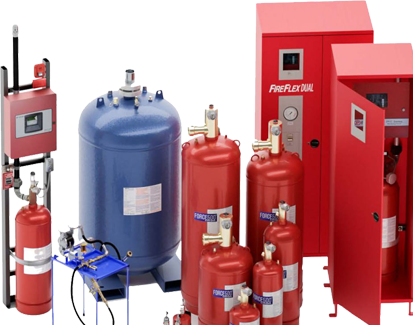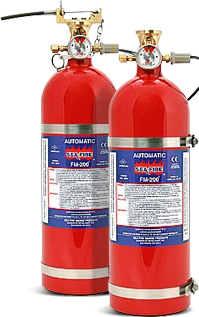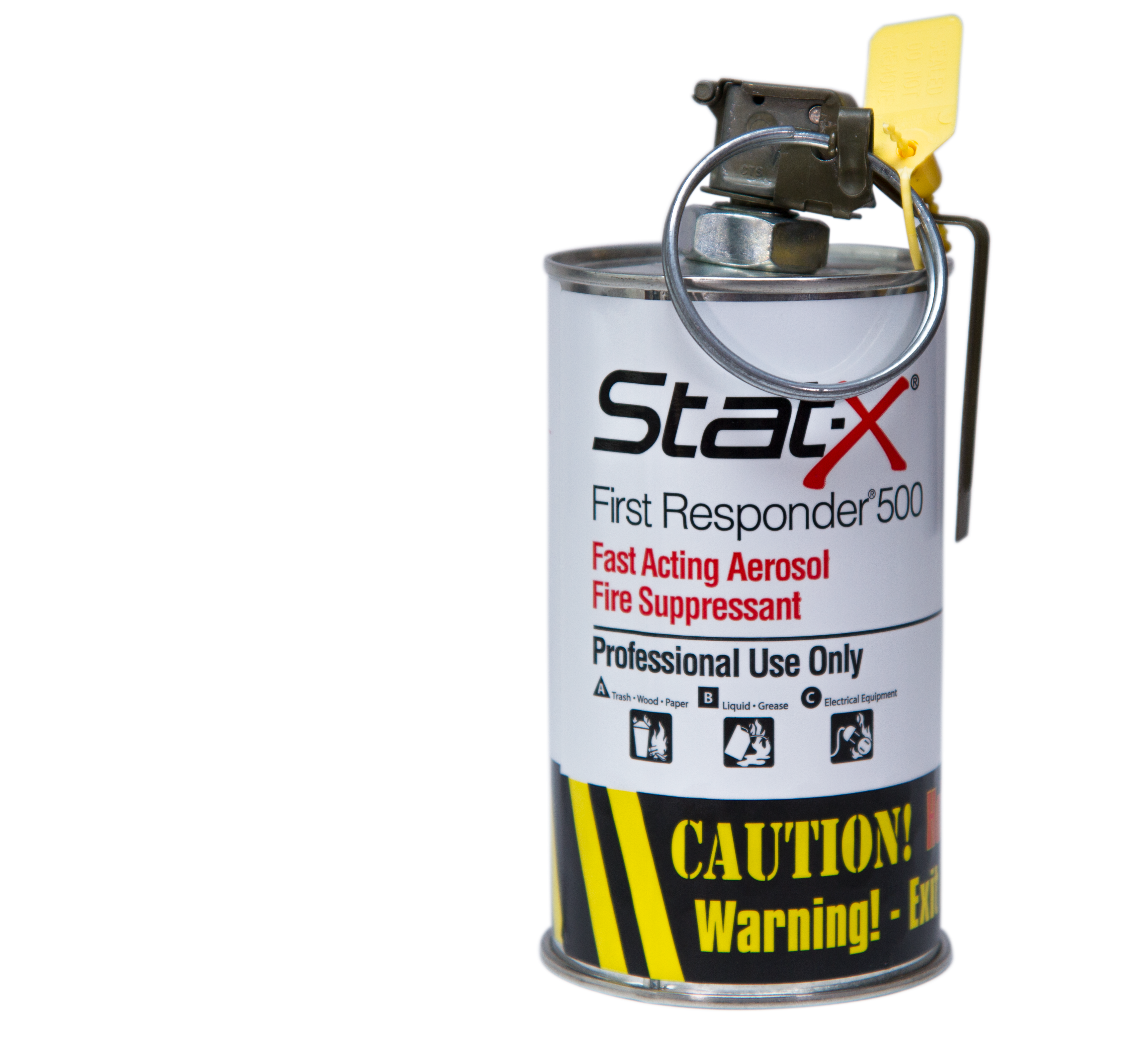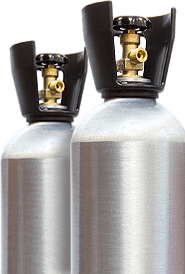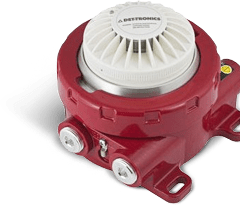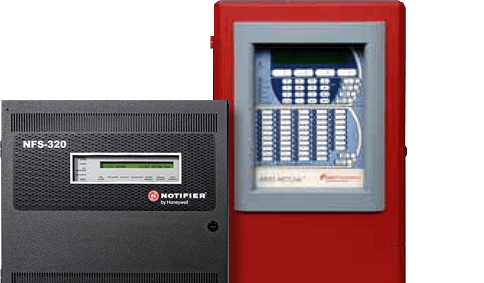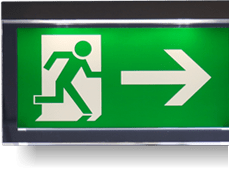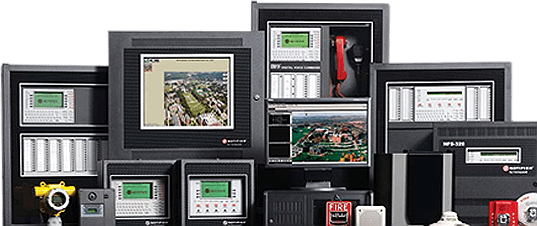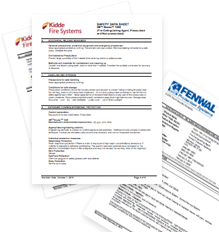What Type of Fire Protection Systems Will Best Suit Your Fire Safety Needs?
Choosing the right fire protection system is critical for ensuring safety and minimizing damage. With various options available — like sprinklers, gas-based suppression, and clean agent systems — it's essential to understand which best suits your environment and fire risks.
Key Takeaways
- Active vs. Passive Systems – Active systems (sprinklers, gas suppression) combat fires, while passive systems (fire doors, barriers) prevent spread.
- Water-Based vs. Non-Water Systems – Traditional sprinklers vs. clean agents for sensitive equipment protection.
- Industry-Specific Needs – Different industries require tailored fire suppression solutions.
- Cost, Maintenance & Compliance – Understanding long-term costs and regulatory requirements is crucial.
Fires in Canadian homes and businesses cause millions of dollars of damage each year. In many cases, the losses from these fires could have been mitigated, had a fire suppression system been installed in the structure. At Control Fire Systems, our goals are to prevent and mitigate the losses posed by accidental fires.
Fire suppression systems are often “out of sight, out of mind." Building and safety codes require basic fire suppression systems in many areas of Canada. However, this minimalistic approach often fails to consider the special needs and occupancies found in many of these structures. It is not uncommon for a business owner to be unaware of their fire suppression system's inadequacies until it fails to protect their investments.
Explore further
In British Columbia alone, 2,834 business fires injured 150 people in 2020 ( Office of the Fire Commissioner – Annual Report 2020 ). Multiply this across Canada, and you can start to get an idea of the cost of property lost and lives affected by fires across commercial properties.
The Basics: What is a Fire Suppression System?
Any system that is designed to extinguish, control, or prevent the spread of fire is considered a fire control system. The term fire suppression system covers an incredibly wide variety of methods, means, and applications used by the industry to achieve these aims. A fire suppression system may range from a simple fire extinguisher to a complex and highly engineered automated system installed in a manufacturing or laboratory facility.
In general, fire suppression systems are classified by the fire suppression agent that is used by the system to control or extinguish fires. Some of these systems may employ multiple types of fire suppression agents depending on the contents and uses of the structural spaces that are being protected. The most common types of fire suppression agents include the following.
Fire Sprinkler Systems
Fire suppression sprinkler systems come in a wide number of types. Most fire sprinkler systems depend on the fire suppression capabilities of water, as water is an efficient and economical fire suppression agent that can be deployed easily using sprinklers. By utilizing wet systems and dry pipe systems, protection can be extended to almost any area inside or outside of a structure.
Gaseous Fire Suppression Systems
Some situations preclude water use as the fire suppression agent of choice. Gaseous agent systems are particularly useful in areas where electronics, machinery, or other high-value contents are being protected. Most gaseous agent fire suppression systems work by flooding the protected area with a gas that inhibits the chain reaction of the fire, or by reducing heat to the point the fire is extinguished.
Chemical Agent Systems
Most of us are familiar with portable fire extinguishers. These portable systems are examples of chemical agent fire suppression systems. Most restaurants employ chemical agent systems in their cooking areas, particularly in the overhead vent systems in the kitchen. These systems typically disperse a fire suppression agent as a fine powder. Some systems use carbon dioxide (CO2) as a smothering agent.
How Do Fire Suppression Systems Work?
Part of the “out of sight, out of mind" concept of fire suppression systems is the foundation of how fire suppression systems are designed to work. When properly designed and installed, besides routine maintenance, a good fire suppression system is on guard 24 hours a day, seven days a week.
People also search
The Parts of a Fire Suppression System
There are three primary components to any fire suppression system: the storage system, the delivery system, and the detection system. These components work together to provide this around-the-clock protection from fire, heat, and smoke to your business and property.
Storage Systems
If your fire suppression system is water-based, more than likely, there is no storage component. The fire sprinkler system is connected to water mains, and depends on the water system to deliver adequate amounts of water if the system activates.
Gaseous and chemical systems use pressure tanks to contain fire suppression agents. In the case of dry chemical agents, the tanks also contain an inert gas that drives the system and delivers the suppression agent when the system is activated.
Delivery Systems
Most fire suppression systems depend on piping to deliver the fire suppression agent to protected areas. In the case of a water-based sprinkler system, a grid of water pipes of various diameters connects the sprinkler control valve to the sprinkler heads. Gaseous and chemical systems generally use smaller-diameter tubing to deliver the suppression agent.
Detection Systems
Several methods of activating a fire suppression system can be used depending on the type of fire suppression agent and the area being protected. Water-based sprinkler systems typically depend on sprinkler heads that are designed to open at a specific temperature. Some systems depend on electronic sensors that detect heat or smoke to activate the fire suppression system. Some complex systems may utilize a combination of detectors and sprinkler heads.
What is a Halon-Based Fire Suppression System?
In the 1960s, it became apparent that a new fire suppression agent was needed. The military also saw a need for a better way to fight fires in confined spaces where equipment, personnel, and dangerous materials had to co-exist. The result was the development of Halon 1301. At the time, it seemed a perfect solution for a growing fire suppression problem.
Unfortunately, as time passed, it was discovered that Halon, like many fluoromethane compounds, was found to be a danger to the ozone layer. In Canada, Halon has been banned, and production of the substance was halted in 1993. Installed Halon fire protection systems were grandfathered, although many remain in use. However, as existing stocks of stored Halon are depleted, these systems are being replaced.
Halon 1301, or bromotrifluoromethane, is a colourless and odourless gas with excellent fire control properties. Its relatively low toxicity to humans is a great benefit, especially when deployed in confined spaces. This property, along with the fact that Halon controlled fires without damaging sensitive electronic equipment, made it a popular choice as a fire suppression system in many applications.
Question: What is the best fire protection system for different environments?
Answer: The best fire protection system depends on the environment: water-based sprinklers are ideal for general use, while clean agent suppression protects electronics. Foam systems are best for flammable liquids, and gas-based suppression suits confined spaces.
The First Notable Halon Fire Suppression System Replacement
When it became apparent that Halon was to be phased out as a fire suppression agent, engineers and chemists began the quest to find a suitable replacement. The first truly acceptable compound to be adopted was FM-200 . Technically, FM-200 is 1,1,1,2,3,3,3-Helptafluropropane. It is easy to see why most people refer to this suppression agent as FM-200 or HFC-227, its other industry name.
Like Halon, FM-200 is odourless, colourless, and effectively suppresses fires by cooling and interrupting the chemical process of the fire. At very low concentrations, it has low toxicity to humans. Because the compound has no bromine or fluorine components, it is considered safe for the ozone layer and became a common replacement for Halon systems.
Several manufacturers produce FM-200 under their brand names – the most notable are the Dupont product known as FE-227, the SRIs product called SR-200, and the FITECHs entry called 227. Other manufacturers have developed Halon alternatives as well, with one of the most well-known and accepted Halon alternatives being Novec-1230 fire protection fluids.
How is the Novec Fire Suppression System Different?
3M has developed its Halon alternative, known in the fire protection industry as Novec-1230 . Novex-1230 is an effective fire suppression agent that can be stored as a liquid and dispersed as a gas in sensitive applications where electronic equipment and other valuable assets are protected. Novec has many properties that make it superior to Halon and other Halon alternatives in fire suppression systems and applications. Novec:
- Deploys and operates rapidly, extinguishing fires in many cases before other systems, especially water-based systems, can even begin to operate.
- The water-less nature of a Novec fire suppression system protects documents, electronics, and personnel without leaving any residual damage or residue
- Is electrically non-conductive, making it usable in even the most sensitive situations.
- Meets all NFPA and Canadian standards for human safety and qualifies as a clean agent.
- Is not subject to HFC phaseouts.
- Meets the necessary criteria for Class A, B, and C fire hazards.
Novec-1230 is environmentally safe, non-toxic at fire suppression concentrations, and is easily stored and deployed in critical areas and applications. Many legacy Halon systems are being replaced with systems that use Novec-1230.
What Other Options Are There?
Many alternative options exist for replacing Halon-based fire suppression systems apart from FM-200 and Novec-1230. These systems are popular and effective fire suppression systems when used in their correct application and properly designed. Among the most popular Halon alternative systems are some traditional systems such as:
Carbon Based Systems
Carbon-based fire suppression systems have long been used, and the most popular of these are carbon dioxide suppression systems. CO2 has the ability to eliminate oxygen available for burning, thus interrupting the fire cycle. CO2 gas is colourless, odourless, and electrically non-conductive, making it effective in critical areas such as laboratories, power plants, and computer installations.
Unfortunately, CO2 must be introduced at concentrations approaching 34 percent to be effective in fire control. At a 7.5 percent concentration, CO2 is an asphyxiation hazard to humans, making CO2 systems inappropriate in occupied spaces.
ABC Dry Chemical Systems
Another popular and traditional fire suppression agent is the combination of compounds used in dry chemical fire suppression systems . We are all probably most familiar with traditional red fire extinguishers, which are typically loaded with mono-ammonium phosphate powder. In many cases, this is a siliconized mixture that smothers the fire by coating the burning material. Larger static systems can be employed to provide fire suppression protection to bigger areas.
In general, the materials used in ABC dry chemical fire suppression systems are non-toxic and safe for humans, although there is a slight risk of skin or eye irritation to some people. There may be an inhalation hazard if the area is not well-ventilated immediately after the system is discharged.
The greatest downside of ABC's dry chemical fire suppression system is the damage it can cause to property and assets, especially sensitive electronic equipment. In some instances, the clean-up and mitigation costs of employing a dry-chemical suppression agent can exceed the costs of the actual fire damage.
Foam Suppression Systems
In some special applications, foam fire suppression systems are preferable to most other types of suppression agents. Where liquid fuels need to be protected, fire-suppressive foams may be a better alternative to other systems. This is especially true for hydrocarbon spill fires. Fire suppression foams come in different classes that are suitable for different applications.
For the most part, foam suppression agents work by cooling the fire and separating the vapours from the oxygen needed for combustion. The foam forms a barrier between the surface of the liquid fuel and the air, interrupting the fire.
Most fire suppression foams are water-based, making them inappropriate for fire protection systems where valuable assets reside or where sensitive electrical and electronic equipment are in use. Foams are also not considered a suitable suppression agent for protecting documents or other perishable assets.
How Do You Decide Which Fire Suppression System to Use?
There are many variables to consider when choosing the right fire suppression system for your installation. For most situations, the services of a qualified fire protection engineer are your best option. A professional will consider the many factors that must be considered when designing a fire protection system for your property and assets. Among the most important of these factors are the following.
- The types of assets that are to be protected and their vulnerabilities to damage from fire and any fire suppression agents that may be employed.
- The size of the area to be protected.
- The construction of the facilities where protection is needed.
- The presence of personnel in the areas where fire suppression systems are installed.
- Local building codes and ordinances which may impact the fire suppression system installation.
In many areas, any fire suppression system that is permanently installed must be approved and permitted by the local authorities, such as the fire department, building codes, and inspection departments. Your insurance carrier may also have requirements that must be met to gain insurance coverage for your property.
How Are Fire Suppression Systems Installed?
How the installation process works is, in large part, determined by the situation. If you are retrofitting an existing structure, a detailed engineering plan must be completed to include the specifications and requirements for additions or changes to the current structure. Unfortunately, this often requires major structural changes and disruptions to your normal business activities.
In the case of new construction, fire suppression systems are usually installed as part of the original construction. This minimizes disruptions, and is often cheaper than a retrofit or adding a fire suppression system to an existing structure.
In any event, certain factors are critical to installing a fire suppression system, whether they be adding it to an existing structure, retrofitting an existing system, or building an entirely new structure with a fire suppression system.
- The system must be properly engineered to meet all industry and legal requirements. A qualified fire protection engineer is usually required to perform these design functions.
- Plans and engineering drawings are required for construction purposes and to submit to the proper authorities for approval and issuance of permits and licenses.
- Qualified installers and contractors must perform the installation. In some areas, these installers must be licensed and certified.
- Training must be provided for the operation and maintenance of the fire suppression system once it is operational.
Installation of any fire suppression system , from a simple hood system in a restaurant to a sophisticated system protecting delicate electronic components, is a complicated task that requires specialized knowledge and training.
What Kind of Maintenance Do Fire Suppression Systems Need?
In most areas of Canada where the Canadian Fire Codes are in effect, the standards for the maintenance and inspection of fire suppression systems are well documented. Usually, these codes and requirements follow those set forth by the US National Fire Protection Association. In general, fire suppression systems should:
- follow regular inspection and maintenance schedules as set forth by the system manufacturer.
- Annual certifying inspections by the local code enforcement agency should be logged, and the equipment properly tagged for reference.
- Testing of the system should be performed by certified individuals or companies as specified by the system manufacturer according to a regular schedule.
- Maintenance or repairs must be properly logged, and the records maintained.
- Proper records of inspections, tests, and certifications must be maintained following local ordinances and insurance policies.
In some cases, automatic systems may provide electronic logs that can supplement the record-keeping required by insurance companies and local ordinances. These electronic logs may even record data such as the weather conditions when the testing was performed. Generally, there must be at least one annual inspection performed in person by a qualified technician to maintain system certification.
How Much Do Fire Suppression Systems Cost?
Estimating the cost of a fire suppression system is a function of what you are protecting, the type of system you are installing, and the system size required to provide adequate protection. Certain minimums may be set forth by local ordinances or building codes that can affect the overall cost of the installation.
On average, the cost of installing a fire suppression system in Canada averages around $40,000. However, this cost can go much higher depending on the factors involved in the system requirements.
Don't Wait for Disaster to Strike
It doesn't matter if you are replacing a legacy Halon system, upgrading an existing system, or installing a new fire suppression system - the time to make the choice is before disaster cripples your business, or worse. Determining the ideal fire protection system to meet your specific safety requirements is a paramount decision, and Control Fire Systems stands ready to assist you with a diverse selection of Kidde fire suppression systems tailored to your unique fire safety needs.
A free consultation and quote on your fire suppression system needs are available from Control Fire Systems by calling 1-866-525-8514.






